The Talos Principle 2 review – One of the best puzzle adventures ever should be an automatic buy for fans of the original
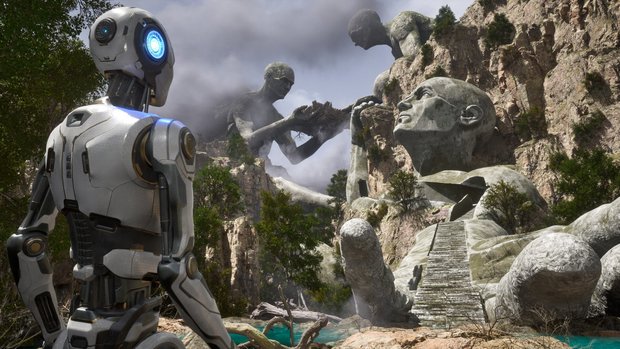
- 2 Comments
With AI casting a shroud of uncertainty above our collective heads, it seems a tall order to ask players to not only sympathize with, but be deeply invested in, a fully AI-centric storyline that takes place in world where humanity has gone extinct. So color me surprised when The Talos Principle 2 took me fully under its spell for a glorious 30-plus-hour journey, ending as one of the most satisfying game experiences I’ve had in distant memory, buoyed by a poignant and convincing message about how we bring meaning to the universe.
Though I shouldn’t say I was too surprised. After all, it’s a rather faithful sequel to The Talos Principle, which came out of nowhere to wide acclaim back in 2014. Developers Croteam, almost exclusively known for the wacky shoot ’em up Serious Sam series for over a decade prior, did a complete about-face from their usual pattern and instead delivered a quiet, contemplative, deeply intelligent adventure game – who could have known they had it in them?
Stepping into the chassis of an artificial intelligence confined to a virtual reality simulation, players were guided through the digital setting by the soothing yet authoritarian voice of ELOHIM, a conflicted and rather benevolent antagonist that must be defied. Puzzle mechanics revolved around pointing beams of light into the appropriate receptors to open doors and operate machinery within elaborate, standalone puzzle boxes filled with obstacles (much like the test chambers of Portal). Between its wide array of brain-teasing enigmas, thoughtful story, and some thoroughly unorthodox secrets that encouraged players to “break” levels by smuggling equipment out of puzzle rooms to use elsewhere, The Talos Principle was one of my favorite puzzlers in the last decade, which only got better with the addition of 2015’s Road to Gehenna expansion.
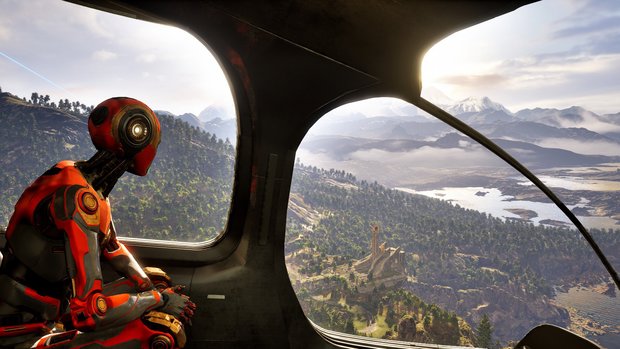
As good as they were, I’m willing to plant a flag in the ground that The Talos Principle 2 is better than either, and by a significant margin. It features a huge increase of new mechanics, a stunning amount of territory to explore, and a story so grand that it ends up making the first game feel like a stage-setting prologue in retrospect. We’ve all seen plenty of sequels that squander the potential of their original games, but I don’t know if I’ve ever encountered a sequel that so deftly capitalizes off the groundwork of its preceding chapter since, gosh… Portal 2? And if I’m being honest, it might even eclipse that.
(Do note that it's rather difficult to get into the premise of The Talos Principle 2 without some degree of spoilers for the first game, so proceed with caution if you haven’t caught up with the saga thus far.)
The original Talos Principle wrapped up with the player character attaining the necessary free will to escape the Simulation and “transcend” into a physical robot body waiting for them on the other side. Waking up in the remnants of the real world, you found that nature had reclaimed the landscape and civilization was indeed gone. Isolated in a world devoid of sapience, it didn’t seem like the sort of ending that begged a sequel, but that’s where The Talos Principle 2 makes its first of many masterstrokes. The events of this chapter take place numerous centuries later, after the original protagonist has become the founder of a thriving and somewhat utopic society called New Jerusalem, packed with citizens that have been similarly “rescued” from the Simulation and given robotic form. This game opens with a brief tutorial jaunt through the Simulation before causing the birth of the city’s 1000th – and reportedly final – citizen: you.
Cautious to avoid the mistakes of the Ancestors (that’s flesh and blood Homo sapiens to you and me), the New Jerusalem populace is guided by rules that impose a necessary restriction on the same types of human ambitions that killed our species and nearly destroyed the planet generations ago. Making do with limited resources and a strict directive to remain a small population, the tenets of New Jerusalem are a fascinating concept. As a strong course correction from our traditional human world, wastefulness is forbidden here, and expending energy on extracurricular endeavors means navigating through a rigorous approval process mired with bureaucracy. But before we even have a chance to get comfortable with the way of life here, a strange, gigantic apparition known as Prometheus interrupts a celebration and challenges the city leaders to seek hidden wisdom on a distant island, which may very well contain the key to the unresolved disappearance of the previous protagonist (now known as Athena) that occurred many years prior. Given the affectionate nickname of 1K, you find yourself wrapped up in an expedition to the mysterious island with several other robot companions, where cosmic-level ramifications await.
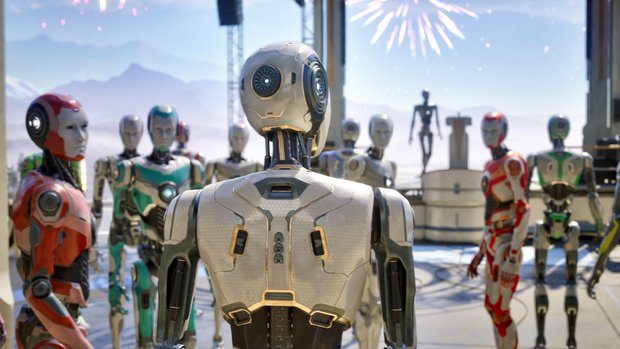
The first thing that struck me is the sheer sense of scale. It’s big… reeeeeally big. Not only in terms of overall length, but in the towering architecture, the vast view distances, and the diverse geography of its twelve massive level hubs, each of which serve as an open-ended playground of puzzles and gorgeous vistas. Several areas contain awe-inspiring design that exists at a frankly mind-boggling scale, especially considering the graphical fidelity on display.
The first such moment came early, when given the option to freely explore New Jerusalem before embarking on the main story. Initially only glimpsed from above in a non-interactive monorail sequence, I figured the city was just a very pretty façade – but no. After descending to the ground level, the city becomes completely accessible, with an immense number of characters to speak with, lore to read up on, and some optional puzzles to crack. The main attraction is a museum dedicated to preserving the history of the Simulation (striking nostalgic gold in the process, with plenty of fun callbacks to the mechanics and setting of the original game), and there’s even a handful of computer terminals that let you play old-school text adventures. And in finally fulfilling the promise offered in the first game’s iconic promotional art, yes, there are cats to pet.
From top to bottom, the game’s writing is one of its finest rewards, no matter how mundane the topic might get. Conversations with fellow citizens are rich and compelling, computer terminals hold moving poetry and delightful diatribes about society, and social media posts are filled with endearing quirks from a species still coming to grips with it. Even the museum’s display cases, which exhibit anything from long-obsolete currency to the sports equipment of humankind, are embellished with informational placards that mix an equal amount of historical reverence and hilarious observational comedy, explaining our biological oddities to a species utterly devoid of them – the concept of pain is likened to some particularly dreaded error codes, for one.
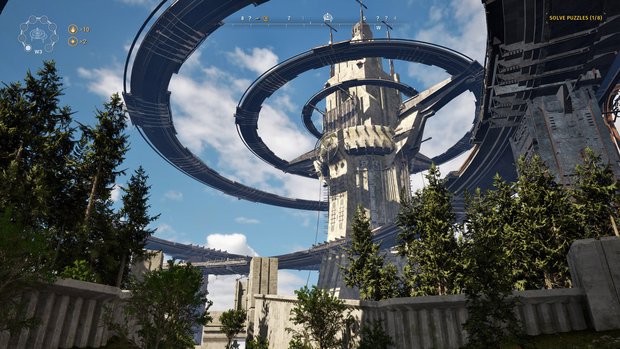
Despite being built by the same in-universe algorithm, the population here is remarkably varied, with an array of personalities, distinct dialects, and conflicting worldviews, all fleshed out with a sophisticated restraint that keeps things grounded and believable. There’s still plenty of fun to be had with the occasional larger-than-life figure, which adds a lovely bit of flair – such as citizen 998, aka Purple, whose surfer dude mannerisms and bro-laden dialogue stems from the voice pack he chose to stand out and appear more confident. I was especially touched by the conversation with a fellow citizen who hangs around the “cat memorial,” where we engaged in a heartfelt lament about our proclivity to grow so attached to our adorable feline companions (even though we repeatedly suffer the heartbreak of their comparatively short lifespans), and another robot who bemoaned that New Jerusalem’s finite population directive is preventing him from finding his soulmate.
There’s an admirable and tantalizing degree of worldbuilding tucked around every corner, and I could have easily spent several hours here if I hadn’t run out of things to do – but it comprises only a tiny sliver of what’s on offer. It really says something that even though the game dangles a very juicy plot carrot that compelled me to board the VTOL to start the grand journey, I just couldn’t bear the thought of doing it too soon and missing even a snippet of optional content.
All of this before you even finish the prologue, with five lengthy acts to follow.
For those who found the simulation-bound environments of the first game a little constraining, Croteam has spun up a whole world of natural splendor this time around. Your aircraft lands before a magnificent metal pyramid called the Megastructure, and the twelve hub areas along its perimeter run the gamut from lush forests to desert oases and mountainous tundra, all at a level of geographical sculpting that vastly exceeds the artistry of the first game. The highlight for me was the Southern Coast, a red-rocked canyon on the edge of a brilliant aquamarine-tinged sea. It might be the most gorgeous desert environment I’ve seen in an adventure game since Myst IV made me want to move to Tomahna way back in 2004.
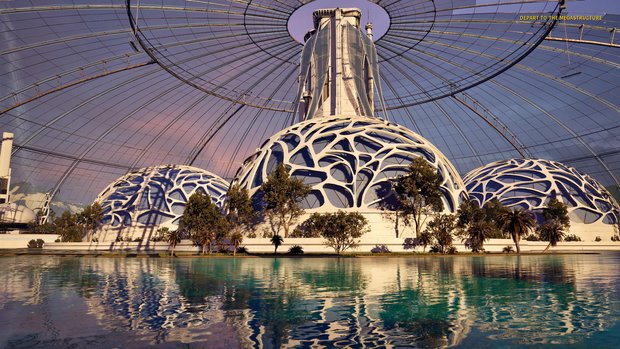
As the hours ticked by, I kept finding myself flabbergasted by new environments, showcasing visuals I didn’t even realize were possible on my midrange computer. The game is a graphical powerhouse and looks phenomenal even without a hefty gaming rig. I played using a graphics card that’s two generations obsolete, and still enjoyed a breathtaking level of detail across the game’s 3D landscape, viewable in either first or third person. The finely crafted lighting made me frequently stop for screenshots, with incredible sunsets and realistic reflections on water and metal. The graphics are even more impressive when you look at the level of fine detail in the textures and models up close.
The soundtrack is similarly exceptional – a lively, beautiful blend of the ethereal ambient tones explored in the first game while mixing in quite a bit that’s totally fresh. It’s a little more upbeat overall than the somewhat somber soundscapes that came before, with wild electronic synths melding with organic instruments to weave a rich and often groovy tapestry. There are literal hours of music here, full of stirring epics that really convey a sense that the work you're doing is hugely important to the future of civilization.
I’ve spent a lot of time focusing on just about everything but the chief draw of the game, so let’s get to the puzzles, which are some of the most satisfying riddles I’ve had the pleasure of delving into in ages. It’s a delightful, abundant buffet of brain teasers that makes the original game’s puzzles look somewhat quaint, due to a huge increase in the number of available tools in your arsenal.

In the original, the only objects that could ferry the red- and blue-colored beams of light to their destinations were called Connectors – basically a fancy, hi-tech little prism housed on a tripod. Here you’ll also have objects like the Inverter, which do the same but flip the color of the light beam in the process (from red to blue and blue to red), and the RGB Converter, which requires an input of each beam type to spit out a whole new green beam… Yes, there’s a third color in the mix now! There’s a lot more goodies too, including (but not limited to) drillers that open holes in specific surfaces, teleporter pads you can pick up and place at will, moving platforms that require a beam of light to power up, other robot bodies you can take control of via a possession-style body jump, and a gravity-shifting mechanic that leads to some of the game’s trippiest moments.
As complicated as this all can get, you generally don’t have to juggle too many mechanics at one time, and the difficulty falls more in the “moderate” end of the spectrum (for the most part). Puzzles are well-balanced enough to make you frequently stop and think a bit before getting that critical breakthrough, so you won’t just steamroll through them – you’ll get a frequent burst of satisfying “Ahas” on a regular basis, without things slowing down too much.
Each puzzle is a self-contained area marked by a barrier that you can pass through but equipment cannot. This gives the game a nicely divvied-up, steady stream of challenge that borders on addicting – the number of times I stayed up late to play “just one more” puzzle was a frequent occurrence, and my attempts at resistance were usually thwarted by my insatiable drive for more. Even though the puzzles are numbered in a sequential order, the nonlinear nature of each zone gives you full freedom to tackle them in whatever order you like. The game steadily increases their difficulty, with the first puzzle of each location serving as a basic primer for a new concept, and the final puzzle requiring a degree of mastery.

Puzzles frequently fall into a formula of exploring every corner of the scene, then experimenting with the tools available to unlock more components, and finally revisiting your method by optimizing the equipment layout until the exit is opened. Some of my favorite solutions involved using the components to become more and more streamlined – in the beginning of a stage, active barriers might require several tools to guide a light beam around corners, but as you make progress and open up more passageways, you might be able to redo your work and achieve the same effect with just one tool, freeing up the other equipment to use elsewhere. By and large, you always have the exact number of tools needed to solve any challenge; nothing is extraneous, and everything is deliberately designed with an impressive level of thought and care.
Only rarely does it get frustrating, and if you do get stuck, there’s a feature that lets you spend collectible “Sparks” hidden around the world to bypass levels you’re stumped by. I’m not personally into the idea of skipping levels, but it’s a nice option to have. I consulted a walkthrough here and there, though I’m pleased to say that I was able to keep that to a minimum, only occasionally glancing at online guides for a push in the right direction rather than a full spoiler. Unlike the Portal games, there are really no twitch reflex puzzles here – sometimes an element of timing is involved, but it’s generous enough to allow you to take a more methodical approach to the solution, making for a nice, even playing field for gamers of all reaction times.
Talos 2 even removes its predecessor’s lethal obstacles such as the floating mines and machine gun turrets, so there’s a lower risk of failure here. You can occasionally get a puzzle into an unwinnable state that requires a reset (conveniently, a “restart from checkpoint” option is available), but the only ways to die are by leaving level boundaries, like swimming out into deep water or running off a cliff.
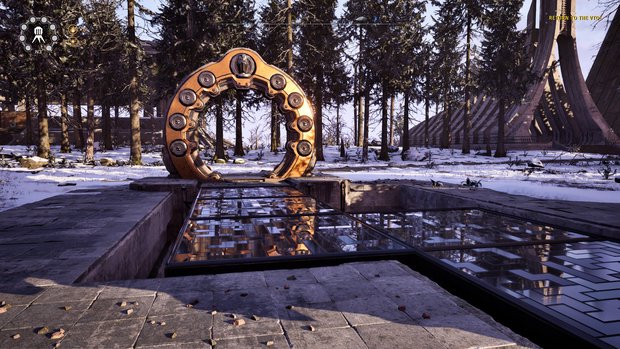
Some of the later puzzles did feel like they asked quite a lot of me, but they never crossed a line into “unfair.” A bit of advice: it’s often worth trying something funky, even if you know it won't work. There’s plenty of times when a just-for-kicks experiment had an unexpected effect that changed my whole perspective on the puzzle's logic. It felt like the game almost always knew exactly the right amount of time I should spend banging my head against the wall in bewilderment before a solution would appear, making for higher highs and briefer lows, and I wholeheartedly loved that balance.
There were even a few times when I wasn't sure whether I'd solved a puzzle the way the developers intended, or if I'd stumbled upon a tricky exploit, but it didn't take away from the satisfaction of beating them. There’s at least one puzzle where I know I wasn't supposed to (or at least expected to) do what I did: an elaborate process of stealing cubes and a Connector out of one puzzle to fashion a makeshift tower tall enough to peer into another puzzle room across the map, where I could manipulate its components from the outside and solve a problem that was otherwise beyond me – and oh, that was fun. Bypassing the intended challenge felt like pulling off a daring heist or being on the cutting edge of scientific discovery – quite fitting, given the game’s themes.
For those who need a little extra challenge, there are additional puzzles off the beaten path that make the rest of the game feel more like an extended tutorial by comparison, coming in two flavors: Lost puzzles and Golden Gate puzzles. There are two Lost puzzles per hub, which can be accessed at any time and definitely get trickier than the eight neighboring “regular puzzles” due to complicated layouts and more lateral thinking required. Expect to get stuck a bit more often in these, but still able to progress with just a little persistence.

The Golden Gates house only one puzzle per zone, and stay closed off until you’ve solved every other puzzle the game throws at you. These ones are hard. Most of them require a level of outside-the-box thinking that the game doesn’t always prep you for, so it really takes some smarts to beat these ones on your own. I generally didn’t need to look up full walkthroughs for these puzzles, but a little outside nudge now and then certainly helped.
It's well worth the pain to get through these devious challenges, even though you don’t need to conquer the Lost or Golden Gate puzzles to complete the game. Calling them “optional” is a bit like calling the definitive director’s cut versions of your favorite films “optional.” These gates don’t merely contain some of the most impressive puzzles, but also unlock a remarkably satisfying resolution to one of the game’s lingering plot threads. The finale of the game is tremendous even without it, but with the added story beats from completing the Golden Gates, it offers one of the best endings of any game I can recall.
The last feature of note is the Photo Mode. For those with an eye for composition, this fun addition can be called up at any time and gives you full freedom to move the in-game camera around, going far beyond mere screenshotting. You can alter the look and pose of your character, change the camera’s focal length and depth of field, and even apply a cornucopia of filters that range from garish to classy. My own attempts at using the feature were fairly humble, but I’ve seen incredible works of art uploaded by the community that truly floored me.
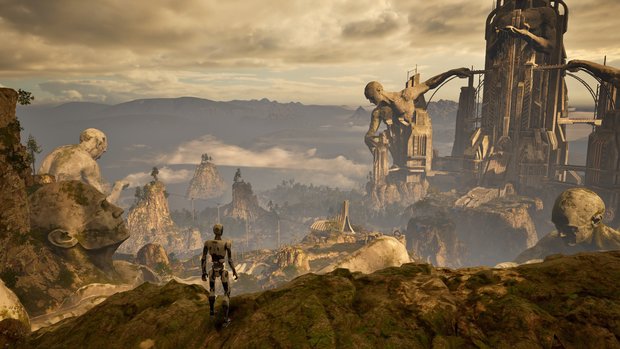
For all the satisfying conundrums and opulent sights and sounds across the game’s hefty scope, what kept me going more than anything else was its story. In the first game, the plot was a layer of fascinating intrigue that connected the puzzles and mostly stayed in the background. In the sequel, the story’s a genuine revelation that remains fully at the forefront and drives every action you take. You can certainly avoid doing lots of reading and talking, and instead just power through the puzzles if you don’t care about the meaty narrative, but I couldn’t even begin to fathom skipping all that.
The characters are so richly defined and deeply human, especially your expedition partners. The idealistic and charismatic leader Byron is a standout, but my favorite might be Alcatraz, a warm yet world-weary scientist who speaks like an older man imparting cautionary words of wisdom. Under the kindly exterior lies a haunted soul, with a lifetime of regret from endeavors that didn’t pan out as planned. Your companions will wander whichever hub you’re currently in and will often chat with you in person or over the radio, but for those who prefer a more solitary, distraction-free puzzle experience, no need to worry: 1K is the designated problem solver, and the rest of the group stays quiet whenever you’re in a puzzle scene.
You’d be forgiven for thinking a game set after the extinction of mankind would lean a touch nihilistic, but in a remarkable feat, the total opposite is true. I’ve rarely played a game that left me feeling so much hope for humanity, largely due to the robot cast’s charming gratitude for being given life by humans in the first place. It's refreshing and soothing, in an admittedly offbeat way, to have a game that features hyperintelligent robots that happen to be totally devoid of malice – they simply want to exist in the world in the most morally upstanding way they can, while staying well aware of their own fallibility in striving for that goal along the way.
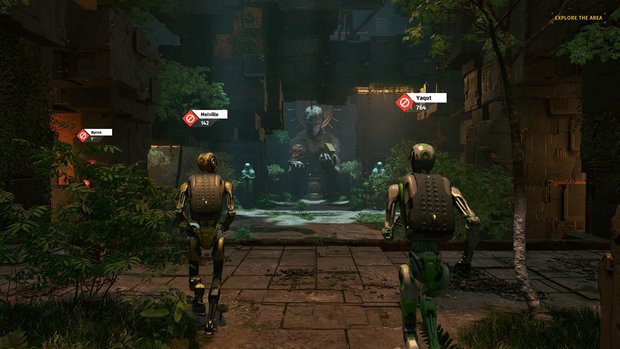
Every now and then, I'd come across a bit of writing that was so potent, such an admirable little ray of sunshine, that I felt it ever so slightly shift my own beliefs. Audio logs from Trevor (a long-gone data specialist who played a key role in the last days of human civilization) are a particular bright spot – the script and voice actor makes this fully unseen character feel as present as anyone else, championing the work of his fellow scientists, suffering from a tragic case of unrequited love, and making a great (and very entertaining) case for John Carpenter being the closest thing modern society has had to a messianic figure.
It helps that the writing is very, very funny – probably a lot funnier than fans of the first game would anticipate – though very seldomly in a wink-wink, jokey way. The humor feels authentic, relatable, and true to life, like the bright-eyed but awkward Yaqut’s admission that his cat’s penchant for peeing on electronics is what actually poses the biggest existential risk to New Jerusalem’s power grid, or the grumpy yet lovable Melville bemoaning all the useless human-biology-centric idioms that remain in the robots’ built-in language libraries (and her habit of inadvertently taking and uploading blurry photos of her hands to social media).
Talos 2 is a game so bursting with a passionate zest that you can't help but be taken under its optimistic spell, and it wields its ideals with a great sense of responsibility. Its pro-technology message and hopefulness around AI may not hit the mark for everyone, but for me it delivered a very spirited statement about the joy and gift of life, at a time when it's needed as much as it ever has. These characters make up one of the finest ensembles in modern gaming; they may be robots, but they love, they grieve, they create, they express themselves artistically, they dream big, and they care very much about each other, which in turn made me care deeply about all of them, even though they look like the offspring of some automobile crash test dummies and the Power Rangers.
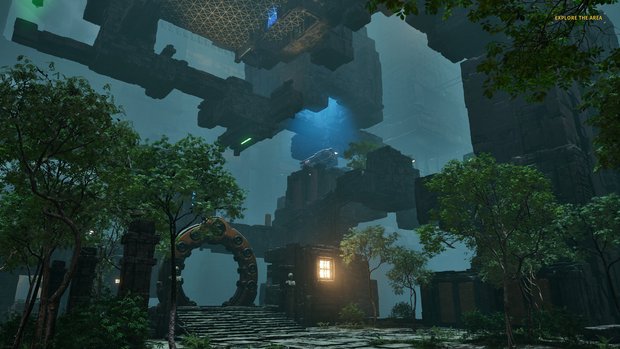
What really helps with connecting to these NPCs is the conversation system. This is rather new to the sequel, as you didn’t directly interact with other characters at all in the first game, other than the occasional choice with the text-based Milton Library Assistant. Here you’ll be regularly interacting with your four expedition partners, who frequently ask your opinion on the mission, on the discoveries you make, and on your worldviews. If you’re someone who takes great pleasure in deep conversations, you might be surprised by how well the game emulates the feeling of having a weighty chat with a good friend.
These conversations often have a fair amount of choice, with far-reaching consequences that aren’t always readily apparent. I counted up to eight different responses available to certain questions, and it floored me how far Croteam went in catering to a player’s freedom of expression. Choosing which opinions to agree with and how you treat others goes a long way toward letting you have a sense of genuine agency.
I haven’t done a second playthrough to see how the game reacts to different decisions, but it’s clear that the story responds with significant ramifications, depending on how you influence your fellow citizens in conversations (and online). Responses I chose would sometimes get huge payoffs in later dialogues, which really felt like the words I picked had a meaningful impact on other characters’ viewpoints. It’s one thing to make a game full of philosophical themes; it’s quite another to actually make the player feel like they’re a philosopher engaging in heady debates with other intelligent thinkers. The game’s responsiveness to your stated beliefs and interpretations of events is a true wonder that will probably go underappreciated amongst all the razzle-dazzle on offer, but it really gives you a sense of ownership over your character, allowing you to put your own stamp onto 1K’s ethical leanings, without any sort of oversimplified “good/evil” dichotomy.

I never got tired of the dialogue. There’s a lot of it, but I took in every bit I could dig up and still wanted more. It goes to places of surprising depth that had me occasionally rethinking my own assumptions about the nature of humanity and our place in the cosmos. Through all the big questions, Talos 2 never even comes close to devolving into rambling, pseudo-intellectual drivel. Just as I thought it was going to run out of points to hammer home on a particular topic, it would explore a new angle that kept the debate fresh and fascinating, whether arguing the role and duty of humanity, if extinction is natural, or the moral implications of “progress” – and somehow make it all easily digestible.
So, for all that praise, is The Talos Principle 2 perfect? Well, no… but it’s about as close as I’ve seen an adventure game get.
There’s an impressive level of high-budget polish throughout the experience, though occasional cracks are visible here and there. A handful of little discrepancies between the spoken dialogue and their written subtitles sometimes pulled me out of the moment, though this was scarce (and barely an annoyance). A few signs of launch issues persist as well, such as a glitch that didn't register my solution to the final sigil puzzle of New Jerusalem’s museum until I'd reloaded the scene and tried it once more. However, multiple hotfixes have already been posted, and the game has been rock-solid for me otherwise.
I didn't realize it until I was most of the way through, but there's a way to fast travel directly to specific puzzles. This helps bypass a little of the tedious running around, although you can only access this feature from the monorail stations. A fast travel from anywhere option would have been really nice, especially when revisiting areas while trying to complete every task leading into the endgame. Some of these levels are incredibly large, and you can wander quite far looking for secrets. Your sprinting speed’s rather fast, so it's generally not a huge issue, but spending more than a minute doing nothing but trudging back to home base is something that can (and does) get old. Thank goodness the soundtrack’s so marvelous.
Final Verdict
Barring these little nitpicks, it's difficult to imagine ways in which The Talos Principle 2 could be measurably better. Its massive size means I may never replay it, but I’m willing to bet it’s going to stick with me for the rest of my life. The themes of the Talos Principle series surround the concept of transcendence, and becoming more than we were perhaps ever expected to be. The Talos Principle 2 fittingly transcends its own origins to become a remarkable and unforgettable sequel, a just plain terrific work of art that fires with gusto on every cylinder. I can barely even imagine where the story could go from here – the ending is a satisfying conclusion for the series while also leaving the window open for a follow-up… but how on Earth do you expand on something this definitive?
Hot take
A rare sequel that fully capitalizes on the potential of where its predecessor left off, The Talos Principle 2 elegantly makes space for genius puzzle design and captivating characterization to tell an extraordinarily unique, gripping, moving, and surprisingly funny story. A masterpiece for the ages.
Pros
- Deeply moving, fascinating, and exciting plot fully delivers the goods
- Contains a dazzling number of highly entertaining, well-balanced puzzles that are sure to satisfy fans of the original while being completely fresh
- Brilliant visual design with an inspiring level of detail
- One of the best electronic videogame soundtracks around
- A story that may actually raise your faith in humanity
Cons
- Almost overwhelming in its epic scope, causing the pace to occasionally lag (especially for completionists)
Sean played his own copy of The Talos Principle II on PC.

- Advertisement
- Help support AGH by advertising with us


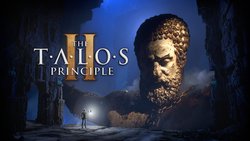








2 Comments
Want to join the discussion? Leave a comment as guest, sign in or register.
Great review, thank you!!
Reply
Great review, thank you
Reply
Leave a comment